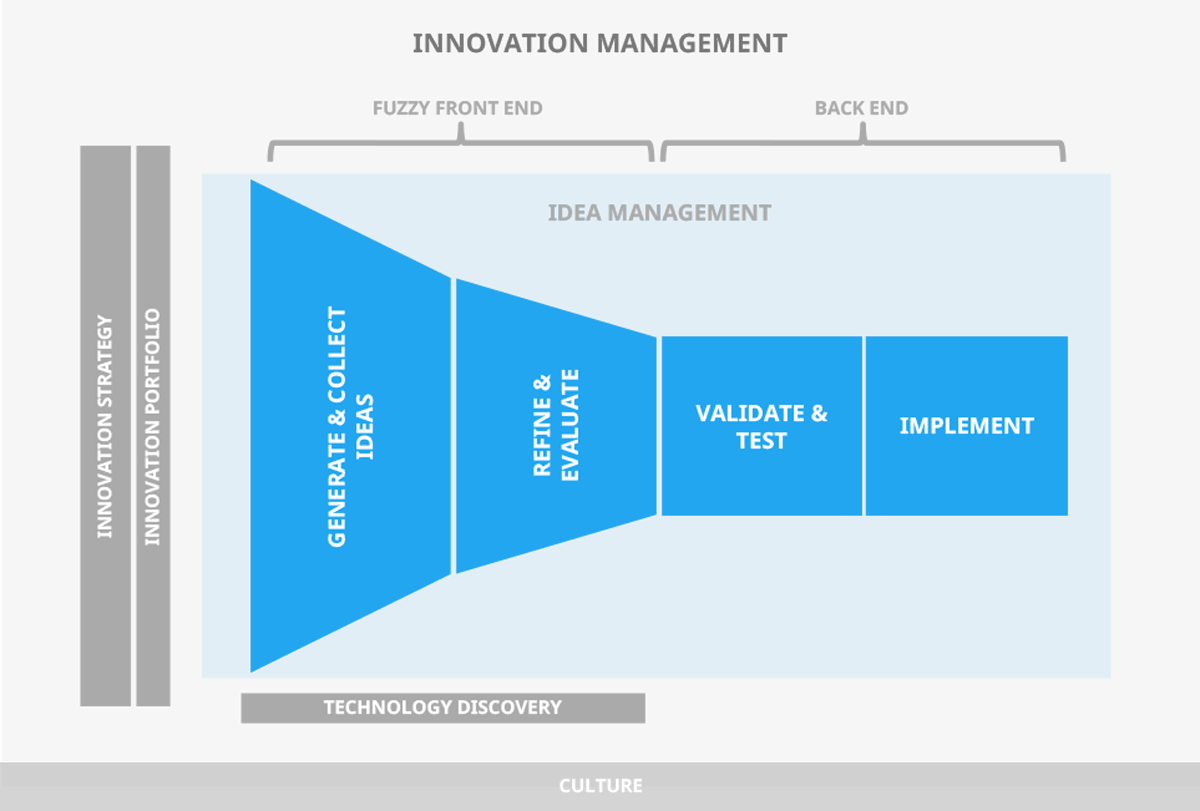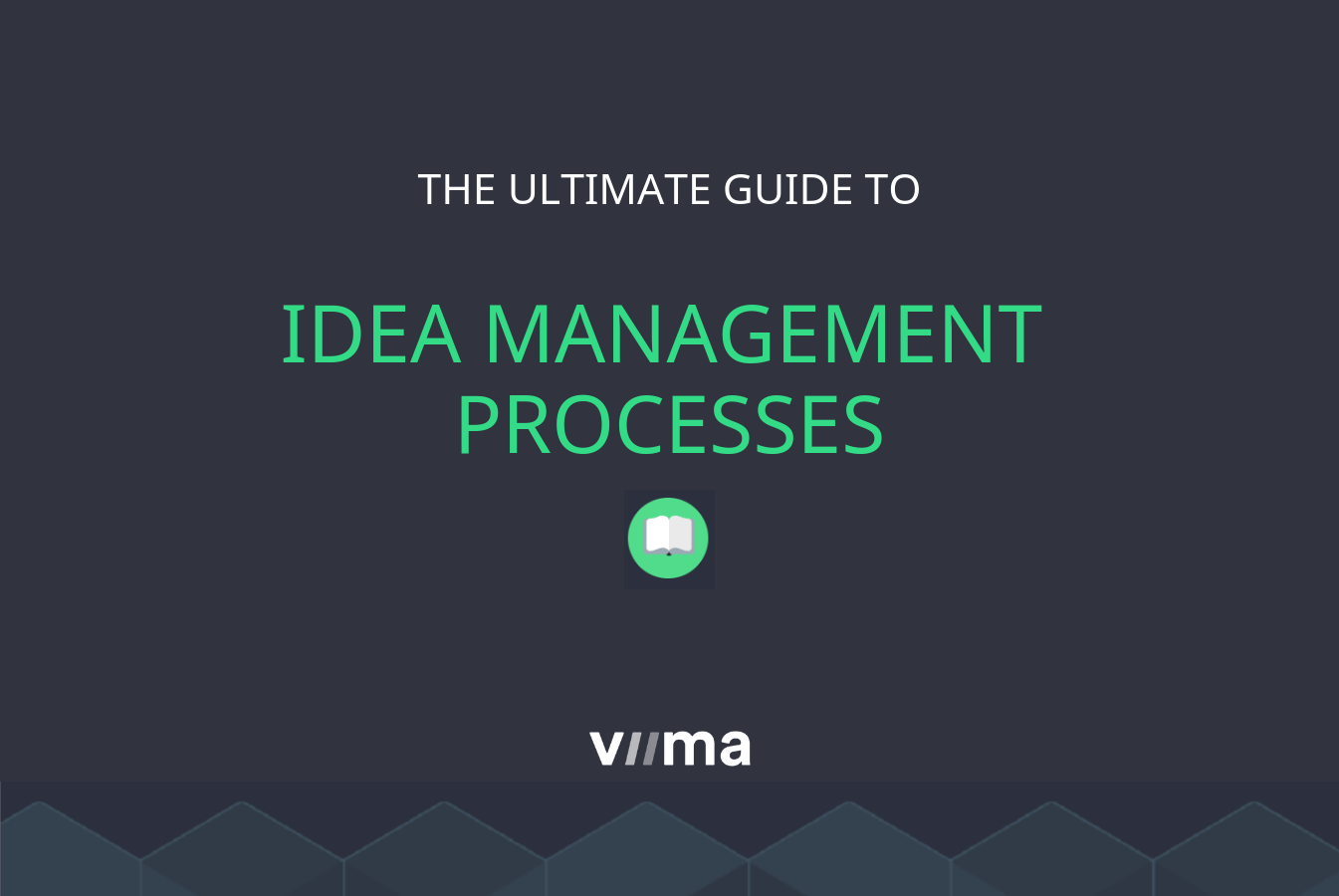Why Idea Management Isn't Actually About the Ideas
Given that we're in the business of idea management software, people are often surprised to hear us say that ideas themselves aren't really worth that much.
Sure, every improvement and innovation always starts from an idea, but there are always countless people that have had the same idea, in many cases years or even decades earlier. It's actually the execution that makes the difference.
And the same applies at the scale of an organization. The purpose of idea management isn’t to find or even develop the best ideas. It is simply to make more innovation happen; ideas just happen to be a convenient vessel for doing that in practice.
Because most barriers to innovation are related to the execution of ideas within the organization, that’s also what idea management should be all about.
However, most people and many organizations don’t unfortunately realize this. This leads to many missed opportunities and wasted effort.
So, in this article, we’ll break down three key areas (beyond the obvious) where idea management can really make a difference. We’ll also explain why it is a very good tool for introducing positive change in each of these areas.
Table of contents

1. Transparency & Communication
The first, and the easiest one to understand is communication and transparency.
Every organization has a tremendous amount of tacit knowledge that employees hold. This covers things like informal feedback from customers and partners in day-to-day discussions, the collective experience and mental models of employees, perceived bottlenecks for their productivity etc.
No matter how much you focus on knowledge management, most of that knowledge will just be impractical to store or transfer because it’s unstructured and abstract.
Every organization has a tremendous amount of tacit knowledge that employees hold that is impractical to document, store or transfer but by asking employees to ideate around the right questions, you can actually make most of that knowledge implicit with minimal effort.
However, by asking the right questions, or by asking employees to contribute to certain key themes or topics, you can turn that tacit knowledge in people’s minds into ideas that are explicit, and often even actionable.
The sheer amount of tacit knowledge some of our customers have been able to make explicit is just incredible, and that obviously leads to dramatically more transparency and thus improved communication. With more of the tacit knowledge from the organization being explicit and transparently available across units, it’s a lot easier for everyone to make informed and educated decisions on what to focus on.
With more of the tacit knowledge from the organization being explicit and transparently available across units, it’s a lot easier for everyone to make informed and educated decisions on what to focus on.
2. People & Culture
The second, and perhaps the most important but hardest to quantify benefit from idea management is the positive impact it has on the people and the culture. These two obviously play a huge role in the innovation performance of a given organization.
Both are obviously big topics so don’t expect idea management alone to fix these for you. However, it can serve as a practical platform for kickstarting and reinforcing positive change across the organization.
The increased transparency and improved communication naturally help build trust and understanding, which consequently help build the foundation for a functional culture.
Idea management is a very convenient channel to tell the story of how innovation really is important for the organization, and how you want everyone to think of opportunities for it, and to then do their part to help make it happen.
However, for that story to stick and lead to actual change, it can’t be just talk. You have to show that it’s the reality, and again, idea management is just a convenient vessel for doing that. When you start expecting, rewarding, and sometimes even demanding participation from people across the organization, you can start to change people’s mindsets and behavior, and that’s what ultimately changes culture.
When you start expecting, rewarding, and sometimes even demanding participation from people across the organization, you can start to change people’s mindsets and behavior, and that’s what ultimately changes culture.
When done right, idea management provides employees with the opportunity to be heard and impact the organization and their own jobs. This can help eliminate many of the frustrations they may have about the status quo, which are often incredibly valuable targets for innovations, but can also help make employees much more engaged.
To change culture, you need to change people’s mindsets and behaviour, and an idea management process is a very practical way to get the ball rolling on both fronts.
What’s more, idea management often brings misaligned views to the surface earlier, which is a great opportunity when used right. You probably shouldn’t go lecture people about how they’re misinformed and don’t understand how something works. Instead, you can start asking questions to understand why that is the case and fix the root causes for such misalignment before the situation escalates.
By using an idea management platform, you can also start to understand who the innovators are within the organization and use them to drive the transformation and ultimately drive more results. And, just as importantly, it’s also a very convenient way to see which parts of the organization aren’t contributing. This again can help you dig deeper so that you can start to understand the root causes for this lack of contribution. Usually, it isn’t just because those people would be lesser than their colleagues, but a sign that there are more structural issues in place.
3. Structures & Processes
The third, and most practical, area are the structures and processes of the organization, especially related to innovation.
First of all, as idea management is typically (or at least should be) a primarily asynchronous and continuous activity, it reduces the impact of a couple of big structural issues that hurt innovation performance in many organizations: the use of primarily synchronous activities like meetings and ideation workshops, and the tendency to do innovation in projects instead of continuous processes. Let’s cover each of these briefly:
Let’s cover each of these briefly:
Bias for synchronous activities
Back in the day, meetings and workshops were the most effective channel for communicating and getting things done. They obviously still have their place, but as technology has improved, we now have more time-effective means to achieve the same results.
Also, as many challenges have become more complex, they often require focused work to solve instead of simple coordination and alignment. Workshops and meetings often provide little value on that front, but instead end up taking up a lot of valuable time from doing that focused work.
Bias for projects instead of processes
Historically, it has been convenient to do innovation, and development in general, in projects separate from the day-to-day operations.
Again, there’s still definitely a time and place for these kinds of structures and many of these projects, but with increased complexity and digital technologies, an increasing number of these would be better to run as continuous and iterative processes instead of one-off projects. This is what the whole agile movement is essentially about. Iterative processes and continuous work are the way to go if you’re working on anything digital, a larger scale transformation, or simply want to pursue strategic goals with innovation.
Iterative processes and continuous work are the way to go if you’re working on anything digital, a larger scale transformation, or simply want to pursue strategic goals with innovation.
The reason is simple. If you’re working on anything that is ambitious, challenging, and innovative, it’s by definition close to impossible to reach those goals on your first try. So, if it was a one-off project, it would’ve been a failure and you’d just ended up losing a lot of time and money. But if it’s a process, you’ve learned something valuable and are one step closer to your goals.
By being structured and outcome-oriented, a systematic idea management process can give you data to analyze how the process works, which helps you spot bottlenecks and improve performance going forward.
In addition to these benefits, a systematic idea management process has a huge advantage: by being structured and outcome-oriented, it gives you data to analyze how the whole process works, which helps you spot bottlenecks and improve your performance going forward.
Conclusion
As you’ve hopefully realized by now, idea management is a very practical and convenient tool for approaching innovation, a notoriously abstract concept, systematically and pragmatically.
So, while you will be working on collecting ideas and moving them forward in the process in your day-to-day, that isn’t what it’s really all about.
If you’re already doing idea management, pay attention to the big picture and make sure you’re actually addressing the real drivers of innovation performance with your work. The good thing is that when used right, idea management will help you with that.
If you haven’t yet tried approaching it the way we’ve outlined in this article, I’d really recommend you give it a try, it can really make a difference and getting started is super easy.
With Viima, you can get started for free within minutes and we’ll be there to guide you through the process.
Interested in Innovation and Leadership?
Subscribe to our blog to get the latest stories on innovation, leadership and culture straight to your inbox.






